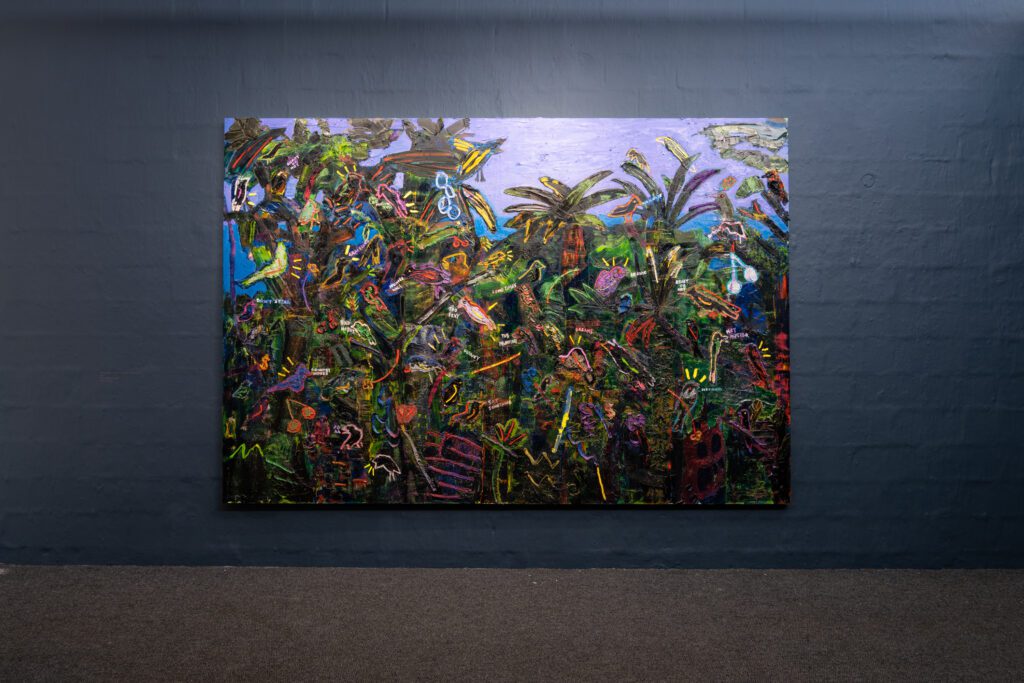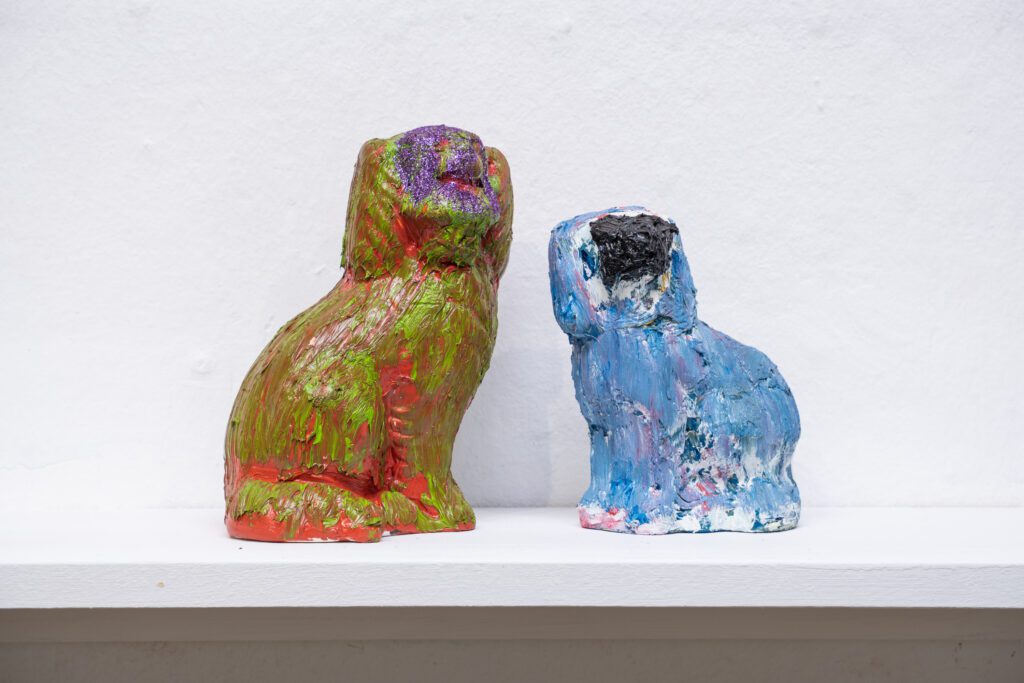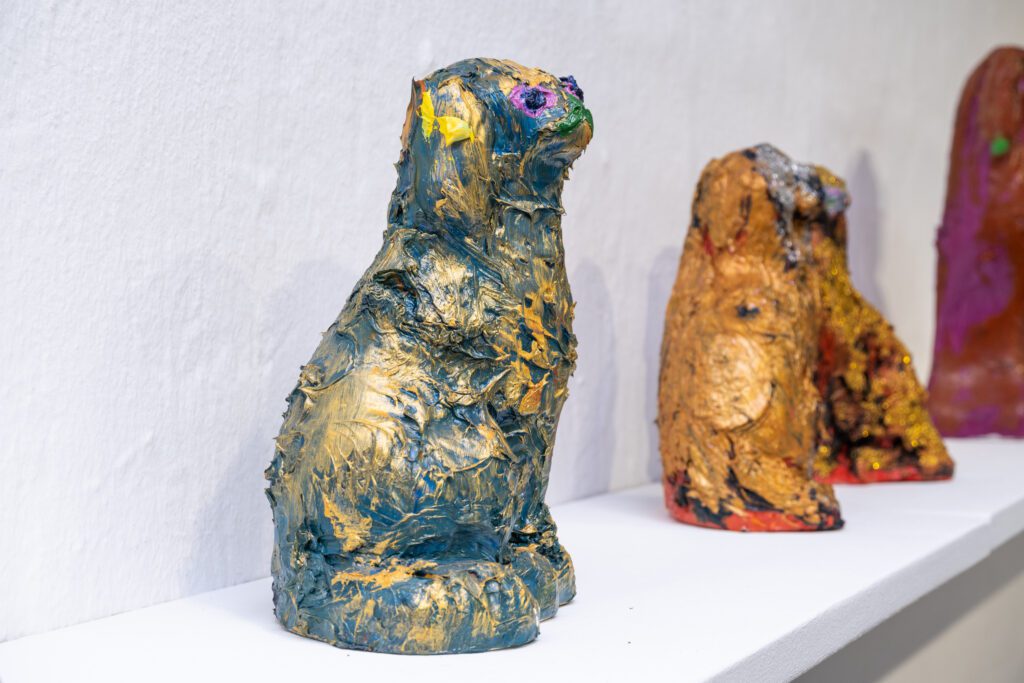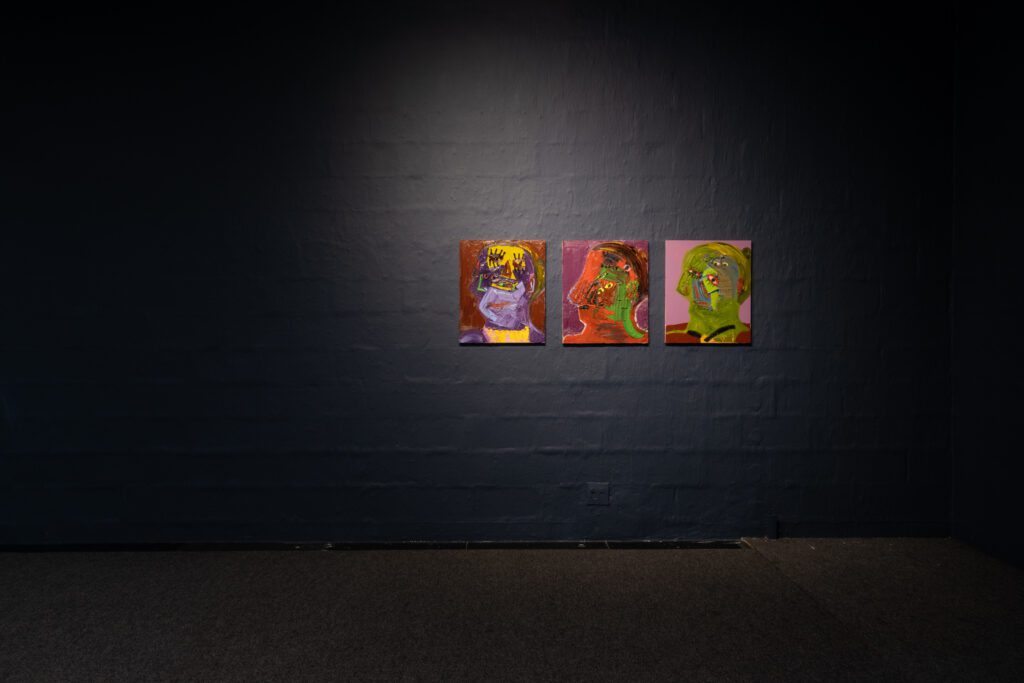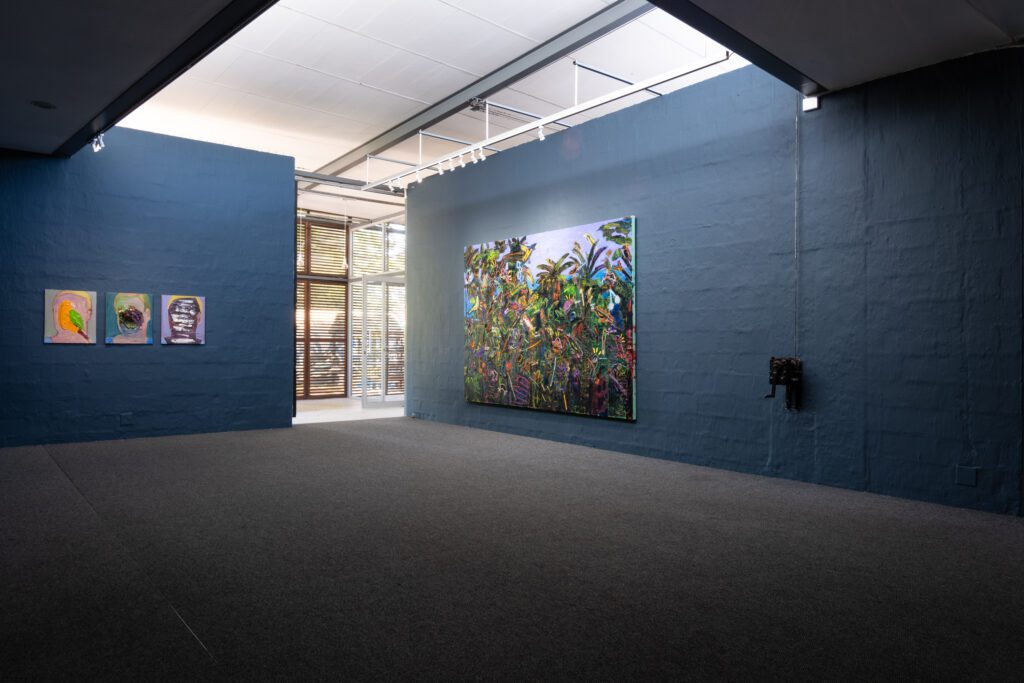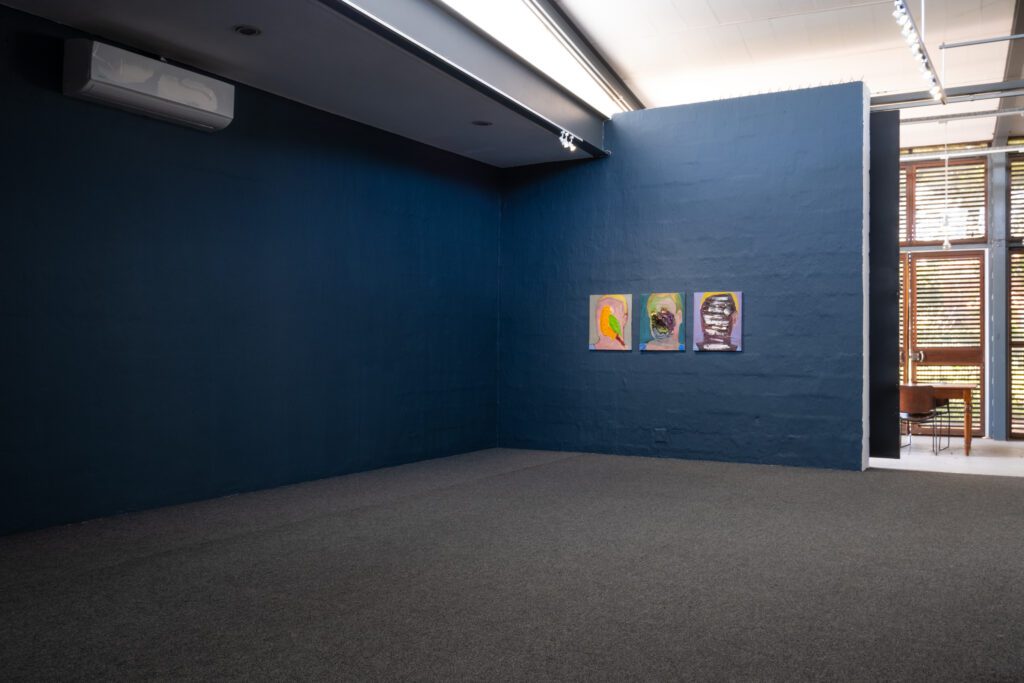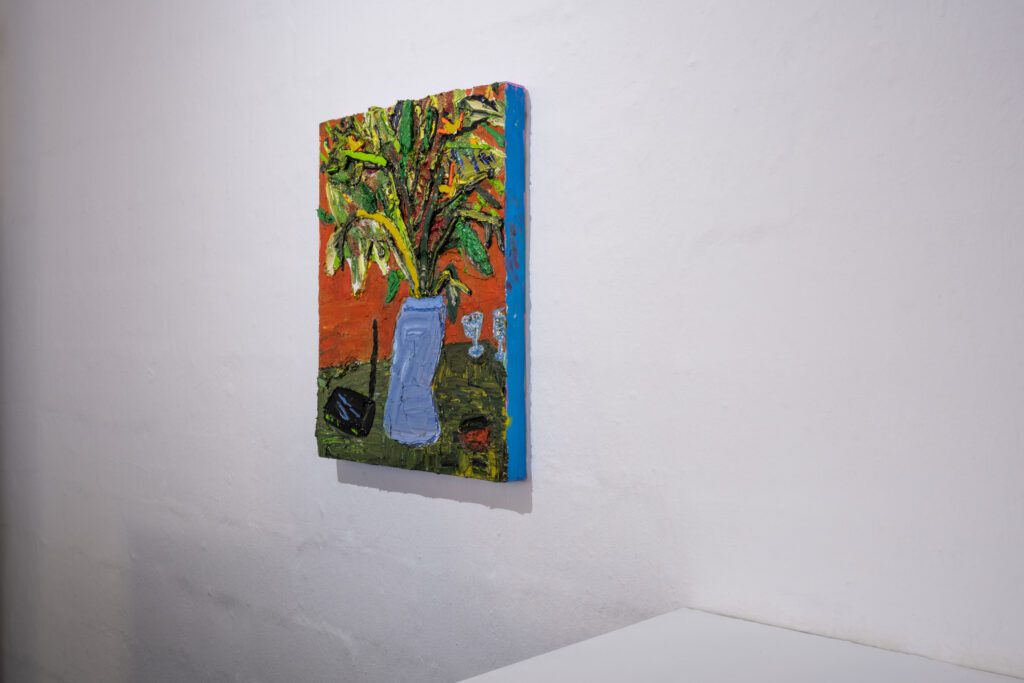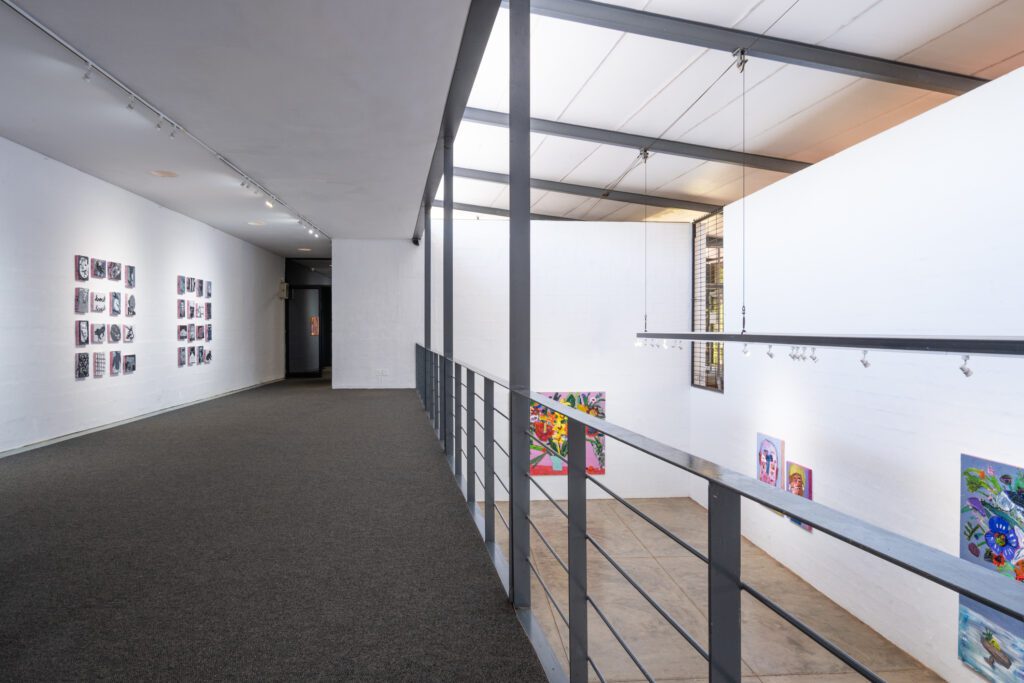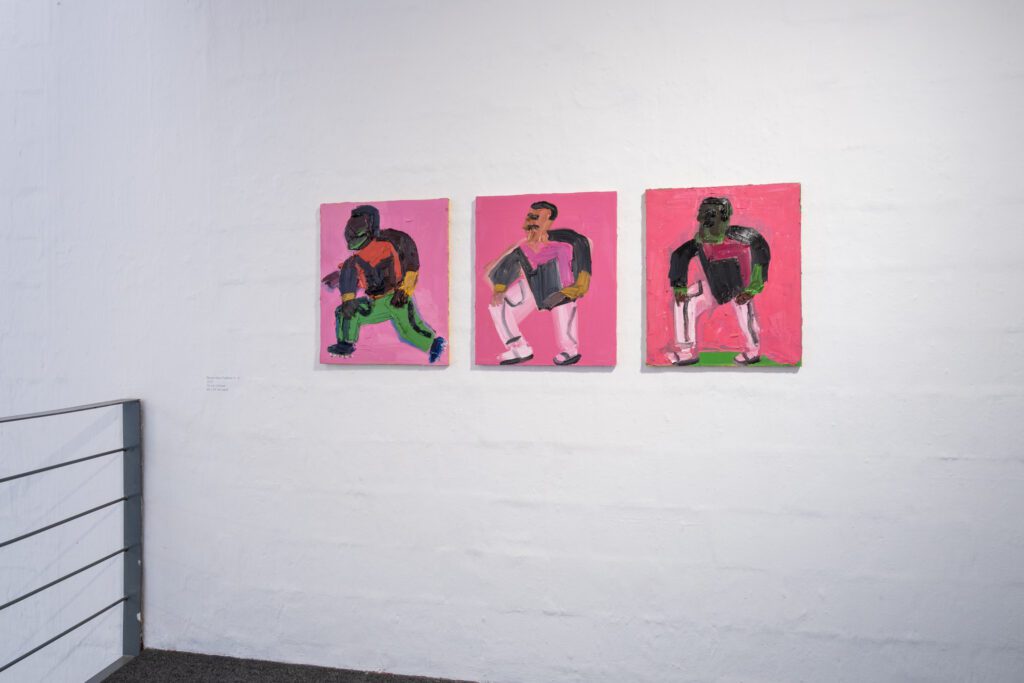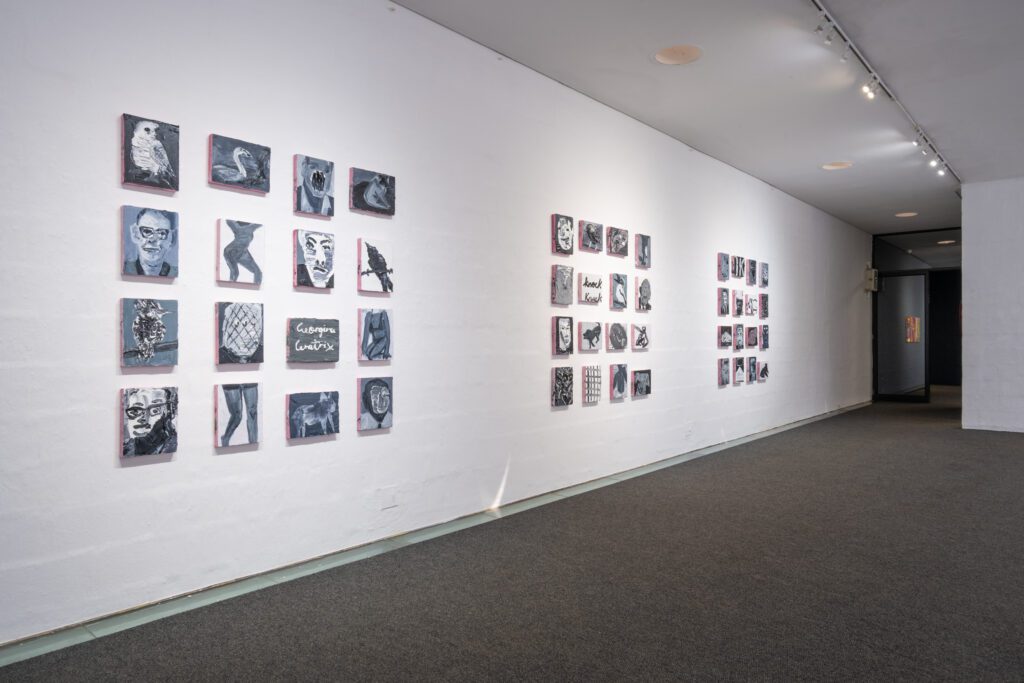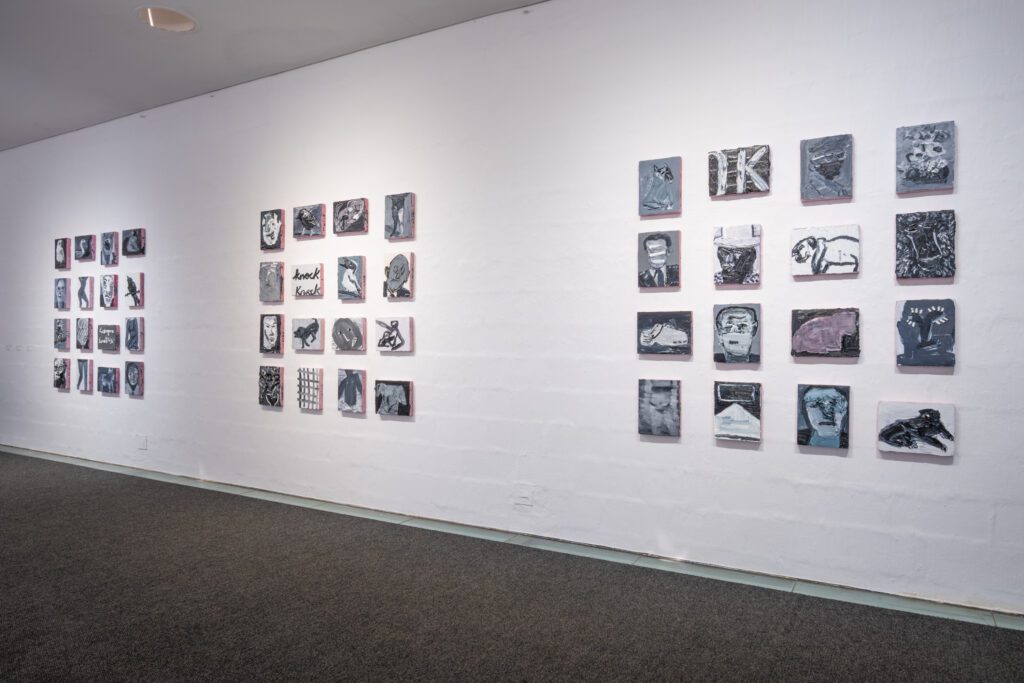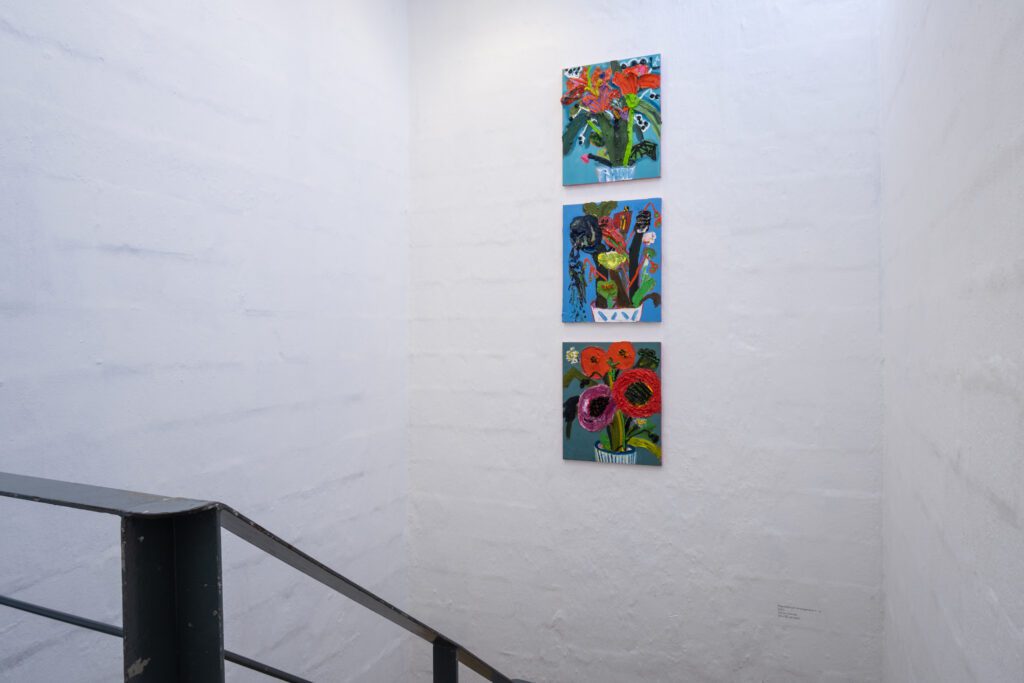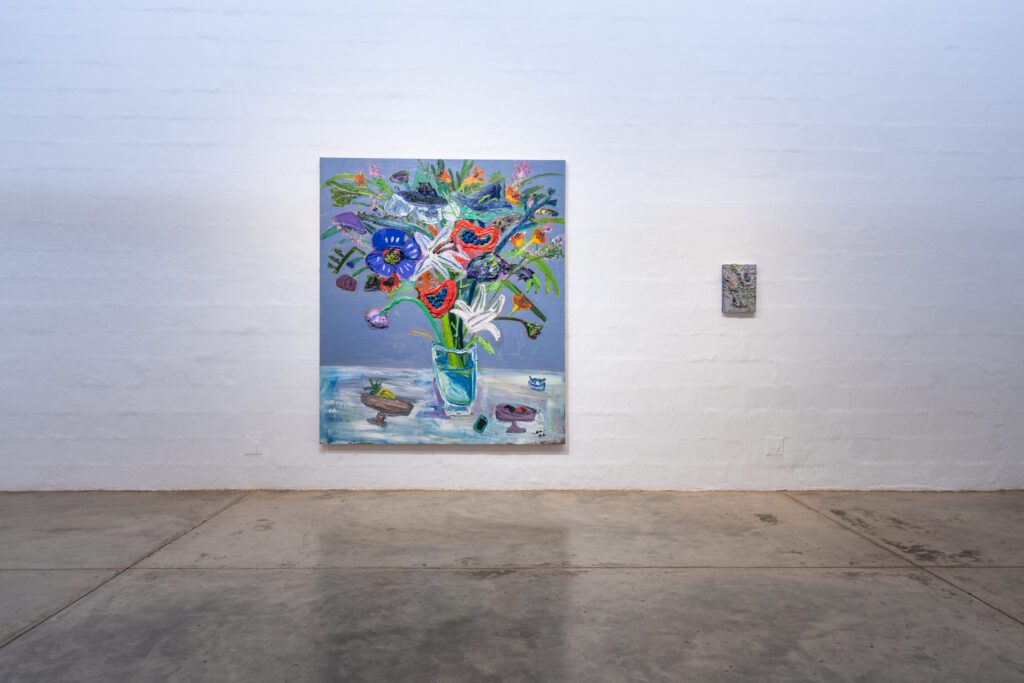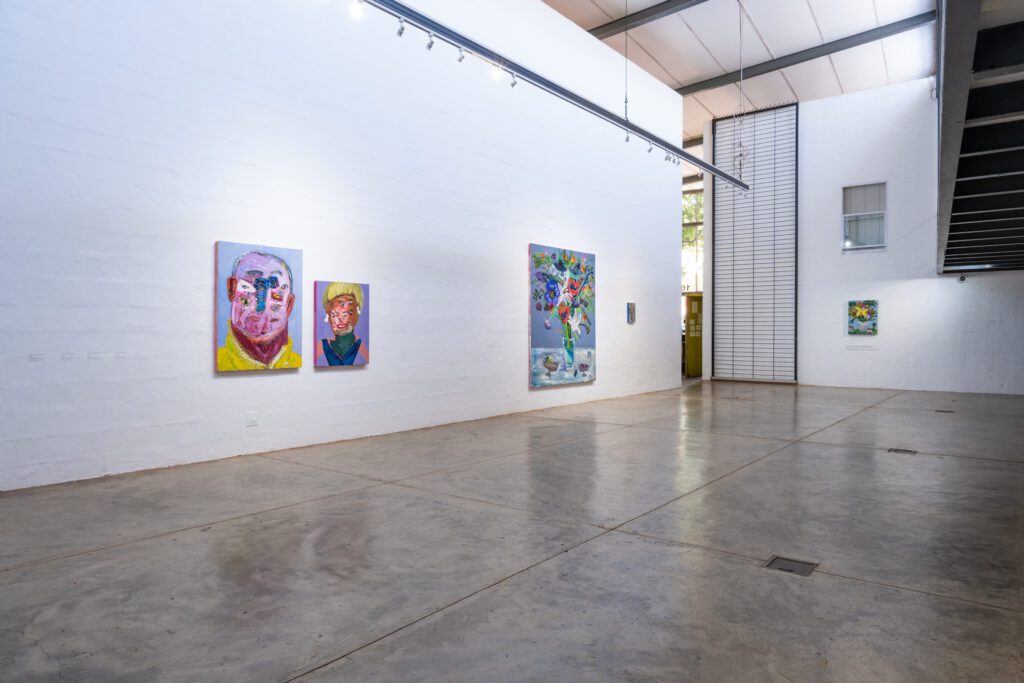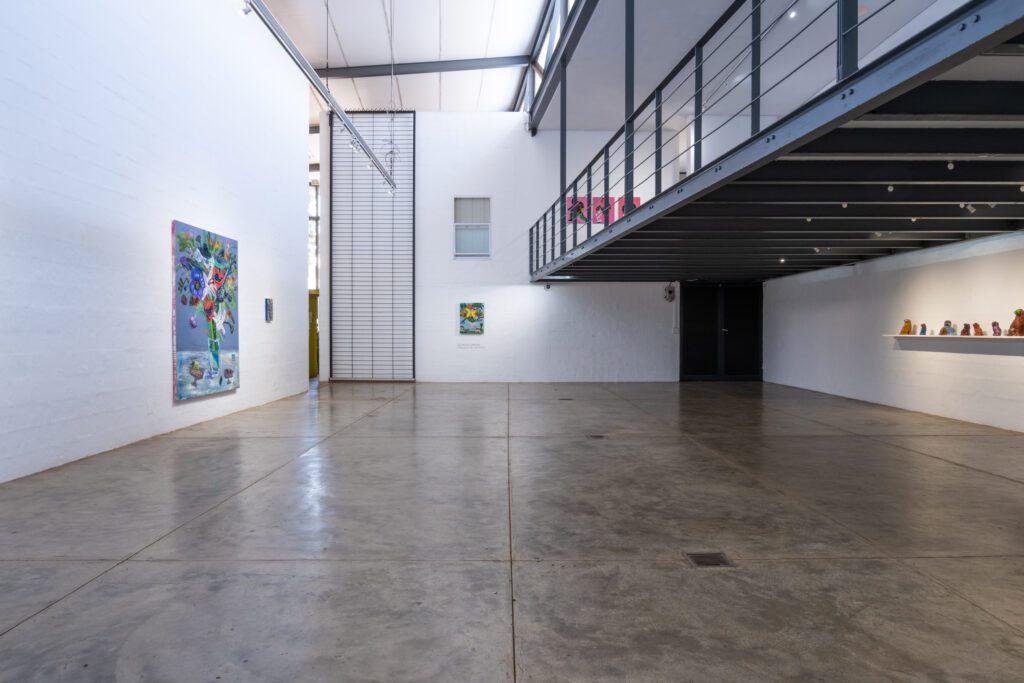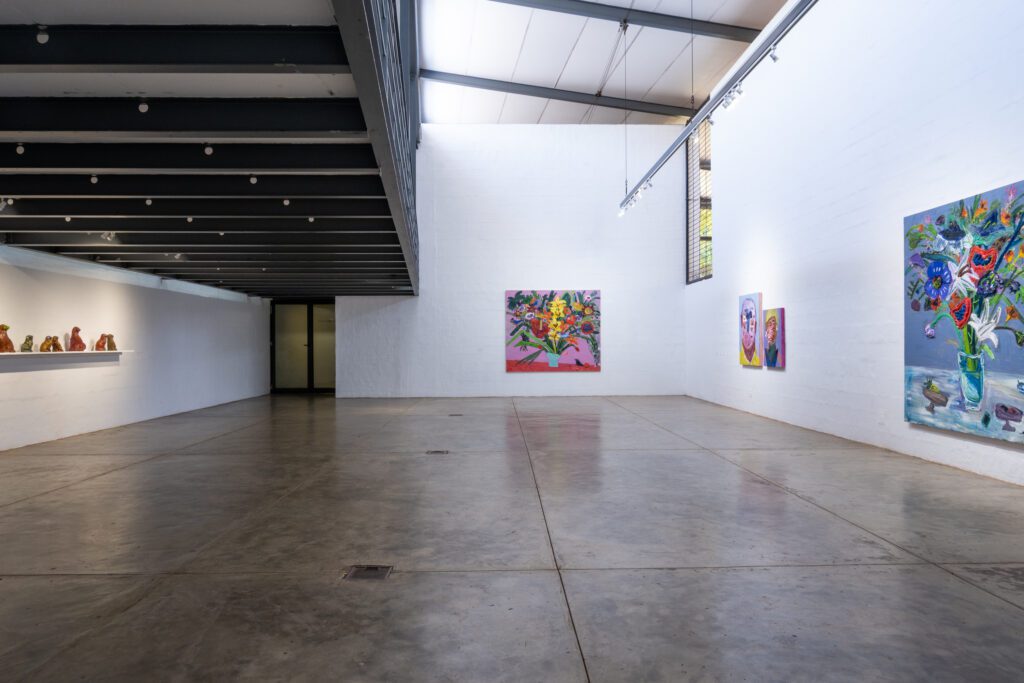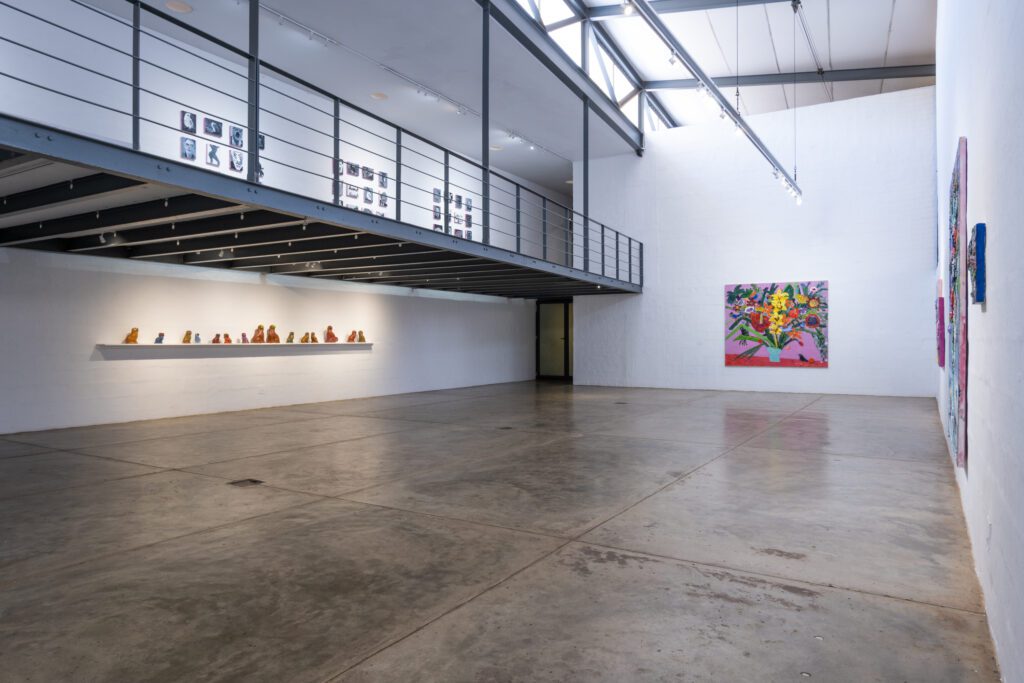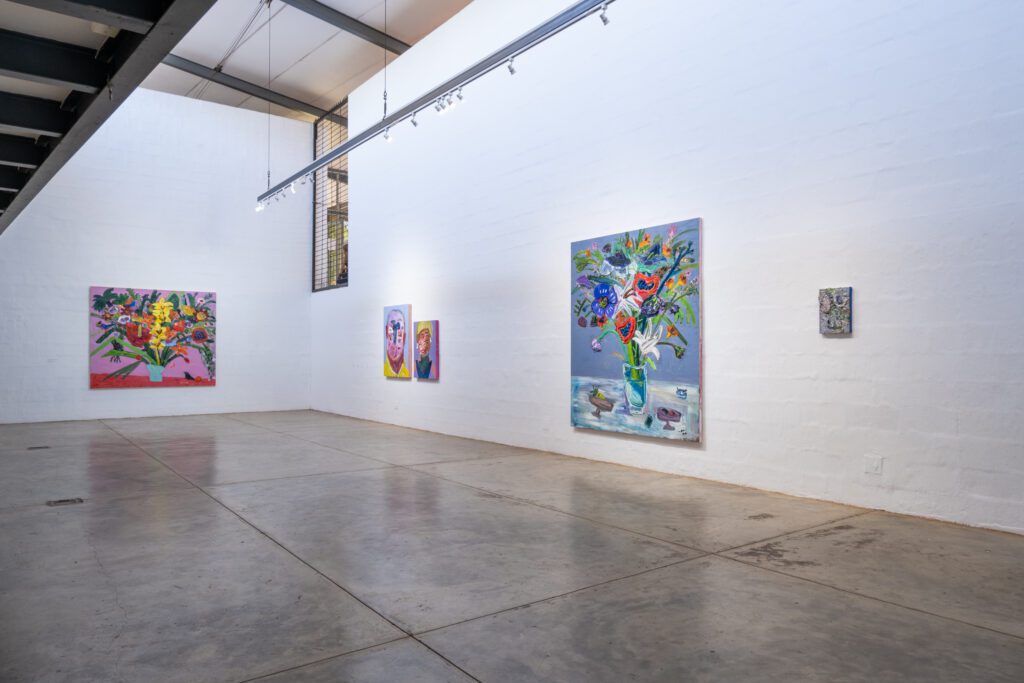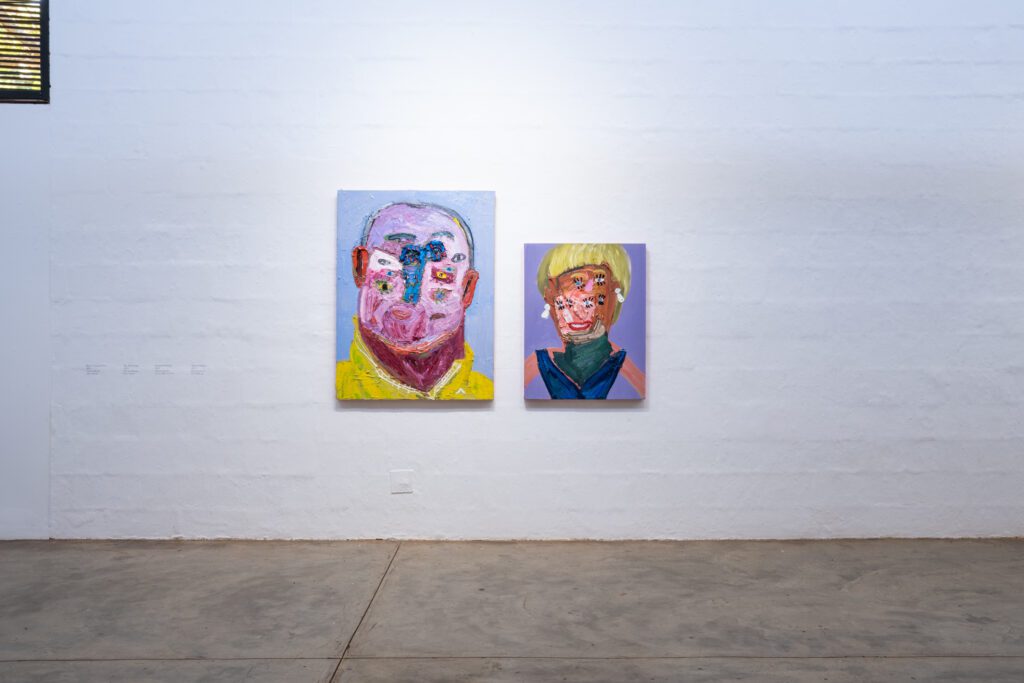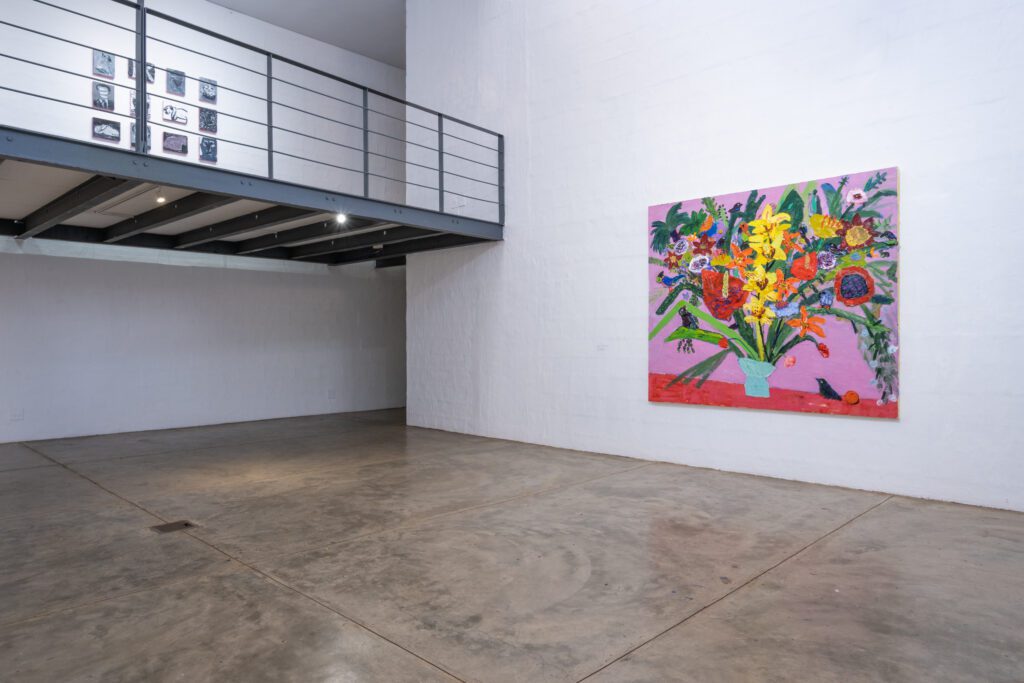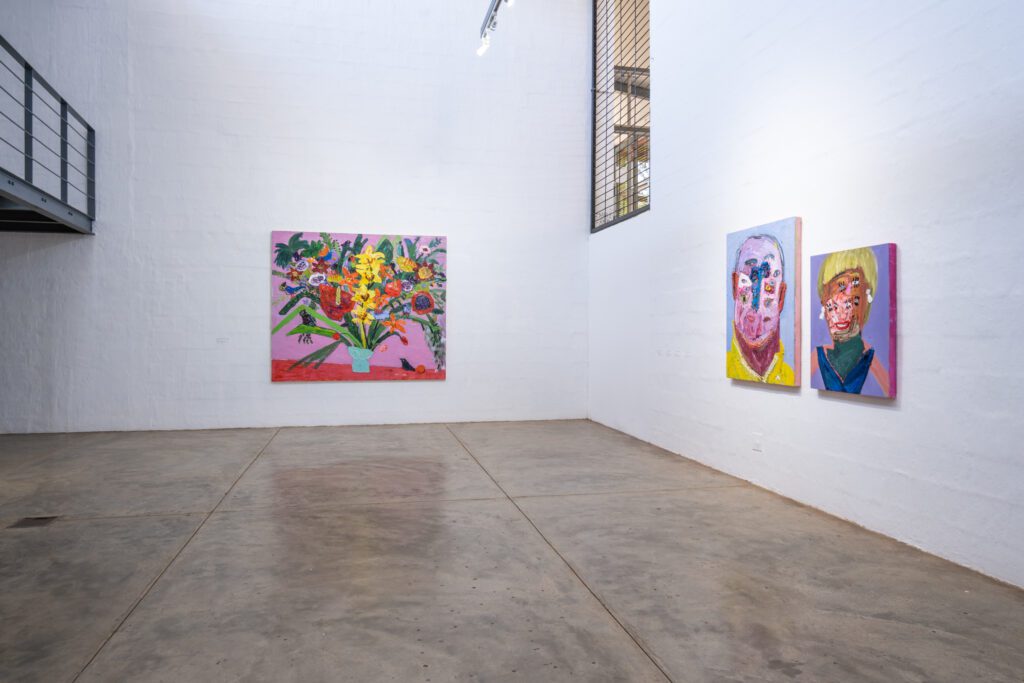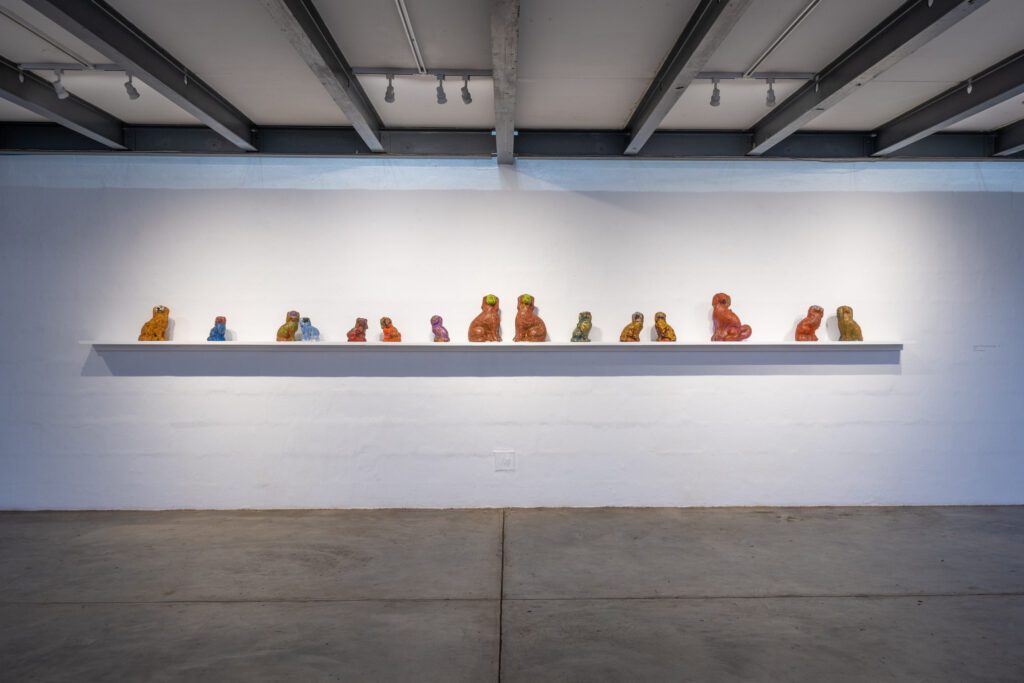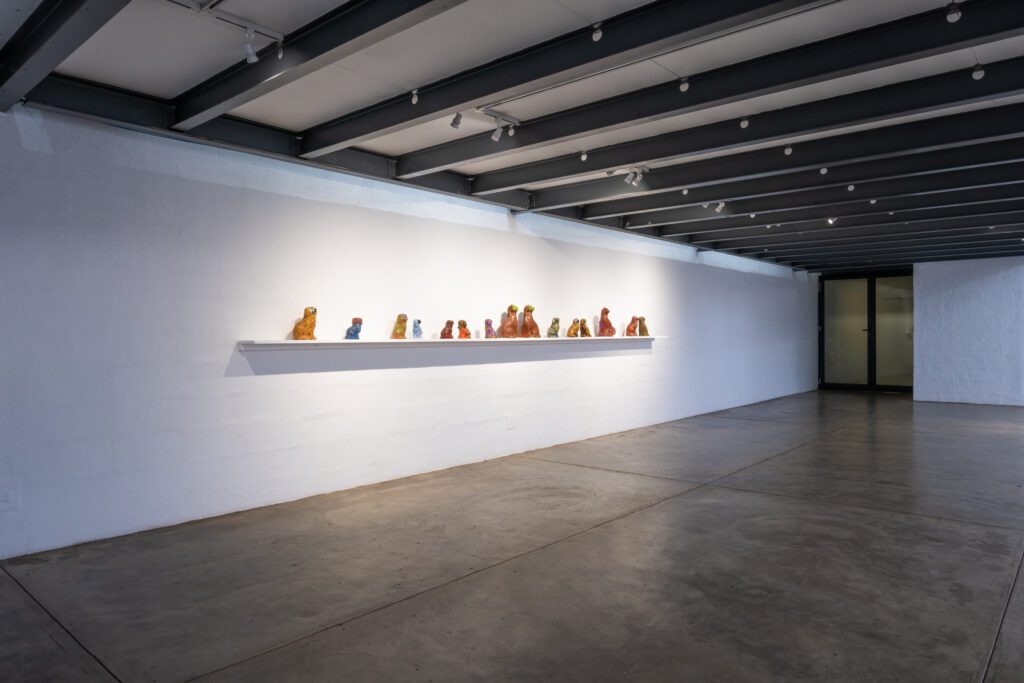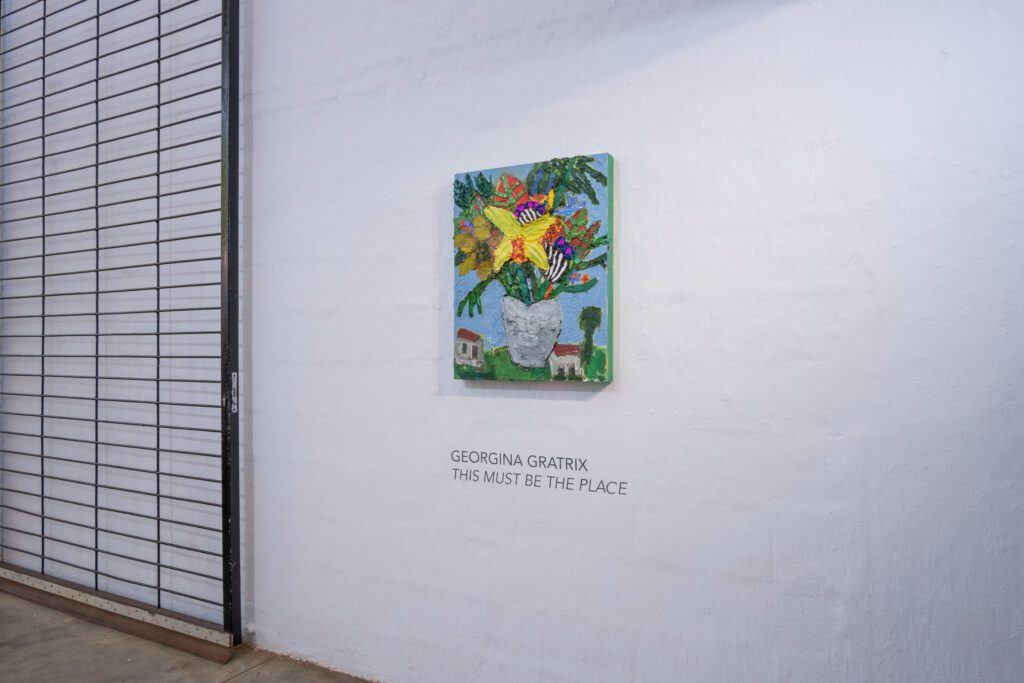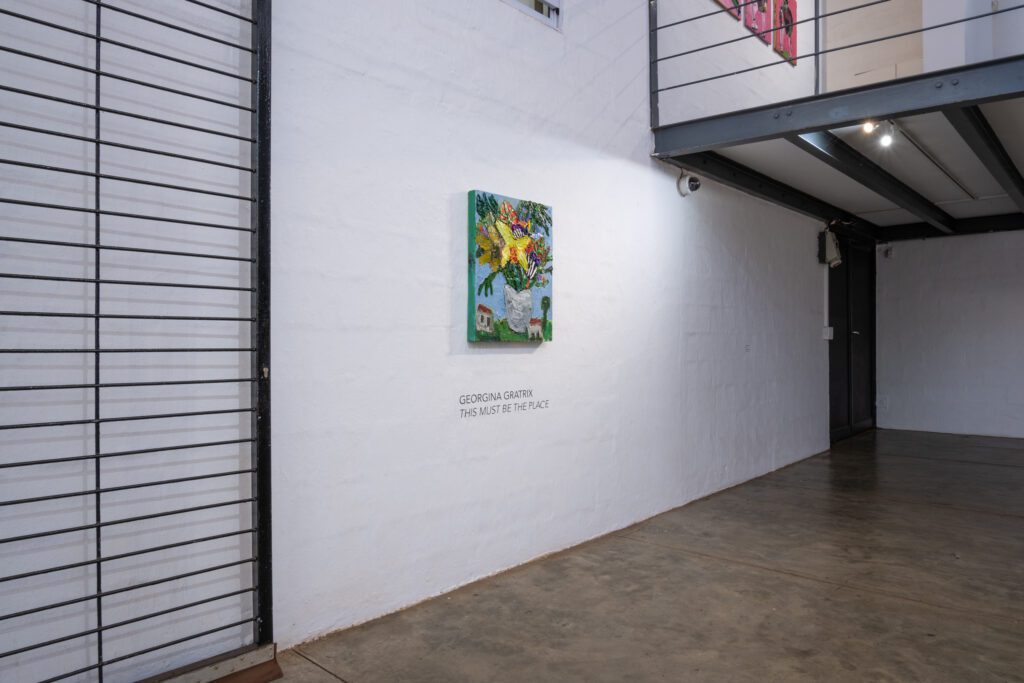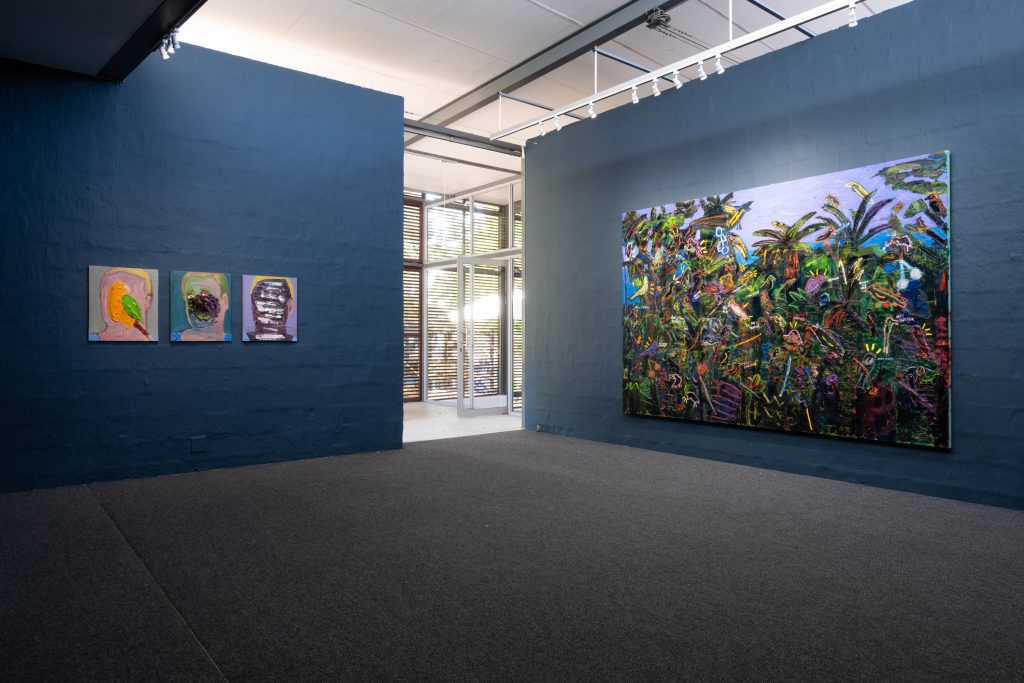This Must Be The Place
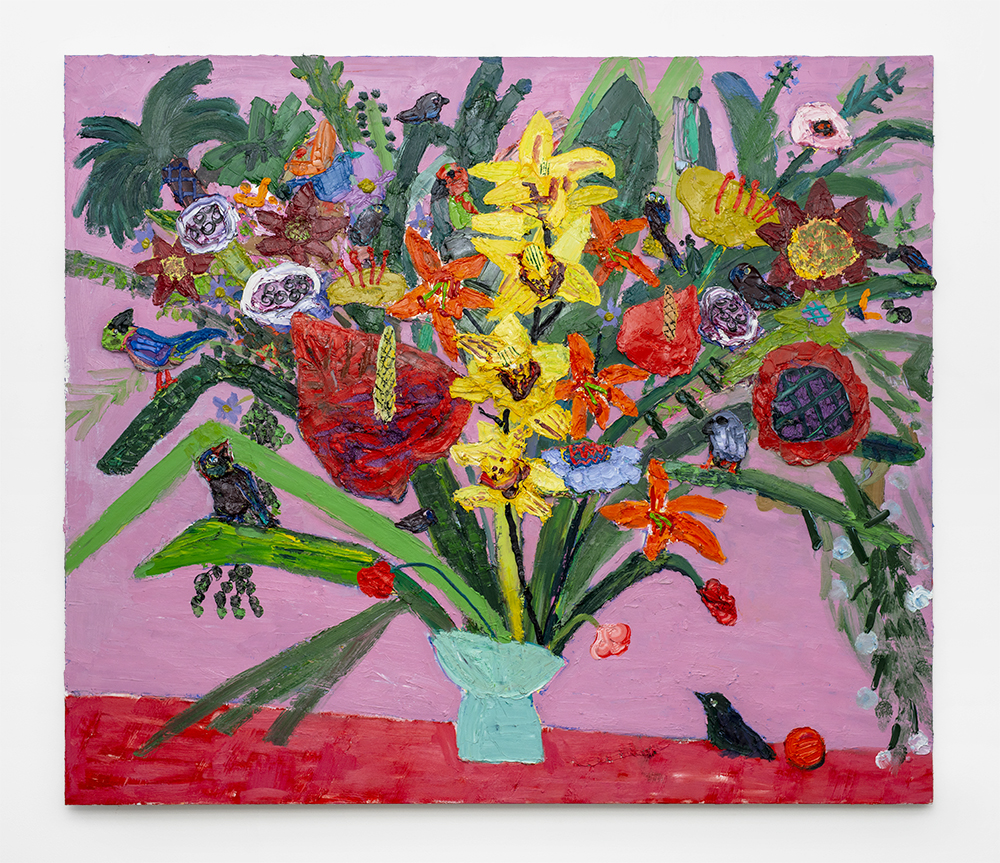
Date
Artists
Georgina Gratrix
For more Info, contact us on: gallery@kznsagallery.co.za
Many things in the world have not been named; and many things, even if they have been named, have never been described. One of these is the sensibility — unmistakably modern, a variant of sophistication but hardly identical with it —that goes by the cult name of “Camp”.
Susan Sontag
To create one’s own world in the arts takes courage.
Georgia O’Keeffe
In her first solo exhibition at KZNSA Gallery, Georgina Gratrix contemplates the deep comforts and anxieties attached to what we consider home. The exhibition, This Must Be The Place, brings together new paintings as well as sculptural works made from found objects in the form of ceramic dogs, which are ubiquitous in many middle-class homes (from KwaZulu Natal to the Karoo), to gesture towards the notion of home. Gratrix subtly evokes memories of Durban, a place where she spent her formative years, through street names, specific topographies and even songs that have become mnemonics. The title of the exhibition is a nod to a 1983 song released by the American rock band Talking Heads as they sing ‘Home is where I want to be. Pick me up and turn me round.’
This Must Be The Place is a personal reflection that points to objects that inspire the feeling of home for the artist. Because just as home can be specific to an existing place, it can also be imagined, its essence tied to the semblance of a thought or a feeling. Gratrix’s paintings of flowers, birds, landscapes and portraits reveal the makings of a different world, one in which faces have many eyes, houses appear small relative to potted plants and where flowers puke green and bluish goo.
To move from one painter of flowers to another, Georgia O’Keeffe offered that “to create one’s own world in the arts takes courage.” In Gratrix’s work courage arrives dressed in glitter. How else to talk about Georgina Gratrix but in relation to boldness? The exuberant use of colour, the blending of influences of what is often considered “high art” and kitsch and the thick layering of paint that is both palpable and haptic, all point to a daring sensibility that breaks away from convention. In Beyond Nature (2021) – a joyful, sparkly and shimmering work – the entire canvas is steeped in glitter to the point where the image behind is barely discernible. Beyond Nature reminds me of a story about O’Keeffe, as told by Joan Didion in the book White Album. Didion notes; “at the Art Student League in New York one of her [Georgia O’Keeffe’s] fellow students painted over her work to show her how the Impressionists did trees. She had not before heard how Impressionists did trees and she did not much care.” Unlike O’Keeffe, Gratrix knows how the Impressionists did trees (flowers too) but similarly, she does not care much. Her embrace of the unnatural, of artifice and of exaggeration recalls a sensibility described by American writer Susan Sontag as Camp — that ability to convert the serious into the frivolous. But not in a mocking sense that finds amusement in its own capacity for irony, rather in a manner that is earnest and tender, signalled by Sontag as a “tender feeling” where camp taste is “a kind of love for human nature.” Sontag elaborates that Camp “relishes, rather than judges, the little triumphs and awkward intensities of character and identifies what people are enjoying”; she notes further that “people who share this sensibility are not laughing at the thing they label as “a camp,” they’re enjoying it.
Of course, sensibility is distinct from style and even more so distinct from ideas. While style might lead us to modes of expression — surrealism, impressionism, cubism etc. and ideas might lead us to concept— still life, portraiture, landscape and so on, sensibility motions towards something more ineffable. This quality of ineffability is precisely what we find in This Must Be The Place, and in Gratrix’s practice more broadly. Read through an art historical lens, the work conflates as it rejects normative painterly traditions. Instead, Gratrix proposes an interesting, intertwined and obscured axiological value of beauty. Where traditional painting provides a visual etiquette that classifies and idealizes reality according to cultural interests Gratrix opts for obfuscation. Instead of idealizing reality by representing it perfectly, she stretches it, distorts it and magnifies it and through this process points to a messier, more unstable reality that is closer to true humanity. Reflecting on painting and humanity, John Berger offered; “There have been paintings which have transcended the tradition to which they belong. These paintings pertain to a true humanity. They bear witness to their artist’s intuitive awareness that life was larger than the available traditional means of representing it and that its dramas were more urgent than conventional iconography could allow.”
Landscape in the key of Casino (Crap Playlist) (2021) locates us in the tropical terrain of Durban. The landscape is filled with verdure – palm trees and flowering plants are punctuated with singing birds. But Gratrix’s singing birds don’t emit melodies in the way that natural birds do, they intone fragments from a human playlist. Lyrics from unknown yet familiar songs —Don’t Speak, Too Sexy, Bad Habit, Wonderwall, Honey, Hey Mister— float across the landscape like an earworm whose melody wriggles in one’s mind incessantly. The large scale work departs from the rest of the work, not just in scale, but in that it represents the night time. It is lavish, full and towering.
A series of small scale works (Common Time series) rendered in monochromatic tones function as a study for the artist. These works, read as rough drawings, contain symbols that are often present in Gatrix’s oeuvre; parrots, flowers, dogs, distorted faces and beach bodies. Similar in technique to the larger canvases but devoid of vivid colour, they offer a moment of pause in the exhibition. Presented as a grid (four rows and four columns) Common Time brings attention to Gratrix preoccupations in their raw form. Each element is painted individually, with little distraction, thereby inspiring a closer look.
The notion of glamour recurs in Gratrix’s works. Sometimes it is alluded to directly (such as in her earlier portraits of art world socialites) and at other times it is simply suggested. In this body of work, glamour is visible in the painting of Ms. Mooimaak (2021), which portrays an elegant blonde in a chic blue dress, pearly earrings and red lipstick. Glamour can be understood as the considered and successful employment of tools (jewelry, makeup, fashion) against the natural limits of one’s body. Mooimaak can be translated from Afrikaans as “make beautiful”, perhaps pointing to the labour and effort that comes with beauty. We know that her beauty isn’t real, but we’re still seduced by it. This is in contrast to the type of glamour that is portrayed in Active People (2021) that seems more effortless, with the alluring promise of attainability. In both Ms. Mooimaak and Active People glamour is captured through what John Berger proposes as the manufactured happiness of being envied.
The magic of manufactured desire is evident once more in the series Notes from Fashion (2021). In Notes from Fashion 1, 2 and 3, agile figures are rendered against a pink background. Each work is a variation of the image that came before it and explores the idea of objective representation. Just as German artist Hito Steryl proposes “the picture plane as a highly unstable space of projection”, Gratrix questions what happens when the same image is repeated, shared, consumed, over and over again. Of course in painting (unlike with photography), particularly of the kind in which Gratrix is engaged, any attempt at duplication is limited by the changing conditions each time paint is mixed and applied. The work experiments with the process of repetition under different conditions. Repetition becomes an interesting method to test ideas before reaching any kind of resolution. This is demonstrated in Side Eye 1, 2 and 3 (2021) as well as Hypothetical Arrangement 1 and Hypothetical Arrangement 2 (2021) where this experimentation continues.
This Must Be The Place is a vision of home through a particular sensibility (perhaps camp, perhaps not). Through the joy of exaggerated flourishes, of pop songs, of flowering plants, flamboyance, glitter and glam Gratrix reminds us that home is where we want to be.
Exhibition text by Nkgopoleng Moloi
Presented by the KZNSA and SMAC Gallery. For more information and for sales queries, please contact gallery@kznsagallery.co.za.
Georgina Gratrix
Bouquet for Lillian Ngoyi
2021
Oil on Canvas
185 x 215cm

